REPEAT OF THE ART OF HENRY OSSAWA TANNER
Because several teachers have asked me where to find this information, I am re-posting my earlier entry about the renowned African American artist Henry Ossawa Tanner. Apologies to those who have already read it. I hope you don't mind.
One of the best parts of writing is doing research. When I wrote All That's Missing, I needed to create a character who was an African-American artist living sometime prior to 1950. I spent hours online and ordered used art history books and biographies. The artist's stories were fascinating. I loved looking at the work they created.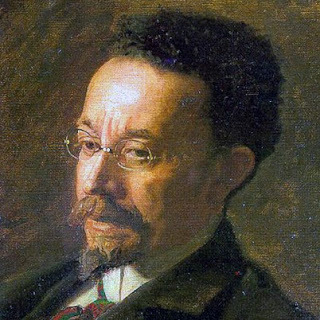 Thomas Eakins, Portrait of Henry O. Tanner 1900Ultimately, it was Henry Ossawa Tanner upon whom I focused. I researched the details of his life in order to create a plausible biography for Solomon Brokenberry, the fictional artist in my novel. Solomon Brokenberry is not meant to be a stand-in for Henry Ossawa Tanner. Rather, I relied upon the facts of Tanner's life to create what would seem real in a fictional character. Purely by coincidence, it turned out that the first
Thomas Eakins, Portrait of Henry O. Tanner 1900Ultimately, it was Henry Ossawa Tanner upon whom I focused. I researched the details of his life in order to create a plausible biography for Solomon Brokenberry, the fictional artist in my novel. Solomon Brokenberry is not meant to be a stand-in for Henry Ossawa Tanner. Rather, I relied upon the facts of Tanner's life to create what would seem real in a fictional character. Purely by coincidence, it turned out that the first
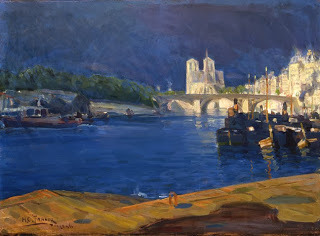 View of the Seine, Looking Toward Notre Dame, 1896 major American exhibition of Tanner's work was being mounted around the time I was doing my research. As a result, there were new resources to consult. The exhibit opened in January, 2012 at the Pennsylvania Academy of the Fine Arts and traveled to the Cincinnati Art Museum and the Houston Museum of Fine Arts. (Here's a link.)
View of the Seine, Looking Toward Notre Dame, 1896 major American exhibition of Tanner's work was being mounted around the time I was doing my research. As a result, there were new resources to consult. The exhibit opened in January, 2012 at the Pennsylvania Academy of the Fine Arts and traveled to the Cincinnati Art Museum and the Houston Museum of Fine Arts. (Here's a link.)
I ordered a copy of the catalogue and pored over it.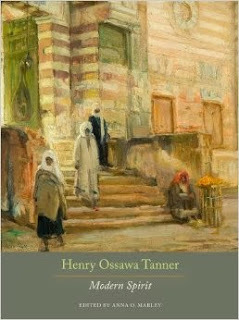 If you are interested in learning more about Tanner and his work, I cannot recommend this book highly enough. I included an Author's Note at the end of All That's Missing in which I told a little about Tanner's life and included a list of resources upon which I relied in creating my fictional artist. This book is included among those resources.
If you are interested in learning more about Tanner and his work, I cannot recommend this book highly enough. I included an Author's Note at the end of All That's Missing in which I told a little about Tanner's life and included a list of resources upon which I relied in creating my fictional artist. This book is included among those resources.
Tanner is the first African American artist whose work forms part of the White House art collection. His painting, "Sand Dunes at Sunset, Atlantic City", was purchased by the White House Foundation during the Clinton administration.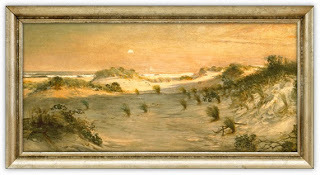 Sand Dunes at Sunset, Atlantic City 1885Learn more about Tanner and the painting here. (http://www.whitehousehistory.org/whha...) There is an audio clip accompanying the photo of the painting. Please take the time to listen! According to several sources, Tanner's best-known work in the United States is "The Banjo Lesson," shown here.
Sand Dunes at Sunset, Atlantic City 1885Learn more about Tanner and the painting here. (http://www.whitehousehistory.org/whha...) There is an audio clip accompanying the photo of the painting. Please take the time to listen! According to several sources, Tanner's best-known work in the United States is "The Banjo Lesson," shown here.
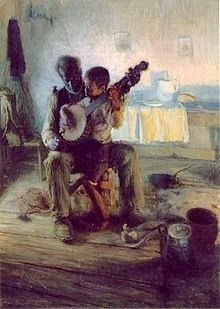 The Banjo Lesson 1893
The Banjo Lesson 1893
It was painted after Tanner returned to the United States from Paris around 1892. He had fallen ill and was forced to come home to recuperate.
As soon as his health was restored, Tanner auctioned as many of his painting as he could and returned to Paris. He received his first major recognition there when his painting "Daniel in the Lion's Den" received an Honorable Mention at the Salon in 1896.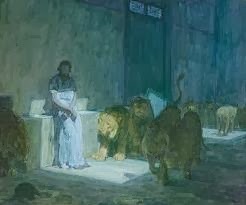 Daniel in the Lion's Den, 1896
Daniel in the Lion's Den, 1896
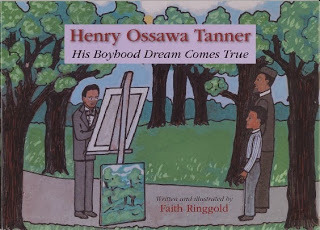
Faith Ringgold created a beautiful picture book to accompany the exhibit, HENRY OSSAWA TANNER: MODERN SPIRIT. It was published by the Pennsylvania Academy of the Fine Arts and provides an excellent introduction to Tanner and his work.
There are certain gifts which come with the hard work of writing. One of them is the reward of accomplishing a difficult task. Another is the gift of discovery that comes as a bit of serendipity along the way. Discovering the story of Henry Ossawa Tanner and his work was such a gift. If you do not know about him, here is a story you need to know.
One of the best parts of writing is doing research. When I wrote All That's Missing, I needed to create a character who was an African-American artist living sometime prior to 1950. I spent hours online and ordered used art history books and biographies. The artist's stories were fascinating. I loved looking at the work they created.
 Thomas Eakins, Portrait of Henry O. Tanner 1900Ultimately, it was Henry Ossawa Tanner upon whom I focused. I researched the details of his life in order to create a plausible biography for Solomon Brokenberry, the fictional artist in my novel. Solomon Brokenberry is not meant to be a stand-in for Henry Ossawa Tanner. Rather, I relied upon the facts of Tanner's life to create what would seem real in a fictional character. Purely by coincidence, it turned out that the first
Thomas Eakins, Portrait of Henry O. Tanner 1900Ultimately, it was Henry Ossawa Tanner upon whom I focused. I researched the details of his life in order to create a plausible biography for Solomon Brokenberry, the fictional artist in my novel. Solomon Brokenberry is not meant to be a stand-in for Henry Ossawa Tanner. Rather, I relied upon the facts of Tanner's life to create what would seem real in a fictional character. Purely by coincidence, it turned out that the first
 View of the Seine, Looking Toward Notre Dame, 1896 major American exhibition of Tanner's work was being mounted around the time I was doing my research. As a result, there were new resources to consult. The exhibit opened in January, 2012 at the Pennsylvania Academy of the Fine Arts and traveled to the Cincinnati Art Museum and the Houston Museum of Fine Arts. (Here's a link.)
View of the Seine, Looking Toward Notre Dame, 1896 major American exhibition of Tanner's work was being mounted around the time I was doing my research. As a result, there were new resources to consult. The exhibit opened in January, 2012 at the Pennsylvania Academy of the Fine Arts and traveled to the Cincinnati Art Museum and the Houston Museum of Fine Arts. (Here's a link.) I ordered a copy of the catalogue and pored over it.
 If you are interested in learning more about Tanner and his work, I cannot recommend this book highly enough. I included an Author's Note at the end of All That's Missing in which I told a little about Tanner's life and included a list of resources upon which I relied in creating my fictional artist. This book is included among those resources.
If you are interested in learning more about Tanner and his work, I cannot recommend this book highly enough. I included an Author's Note at the end of All That's Missing in which I told a little about Tanner's life and included a list of resources upon which I relied in creating my fictional artist. This book is included among those resources.Tanner is the first African American artist whose work forms part of the White House art collection. His painting, "Sand Dunes at Sunset, Atlantic City", was purchased by the White House Foundation during the Clinton administration.
 Sand Dunes at Sunset, Atlantic City 1885Learn more about Tanner and the painting here. (http://www.whitehousehistory.org/whha...) There is an audio clip accompanying the photo of the painting. Please take the time to listen! According to several sources, Tanner's best-known work in the United States is "The Banjo Lesson," shown here.
Sand Dunes at Sunset, Atlantic City 1885Learn more about Tanner and the painting here. (http://www.whitehousehistory.org/whha...) There is an audio clip accompanying the photo of the painting. Please take the time to listen! According to several sources, Tanner's best-known work in the United States is "The Banjo Lesson," shown here.
 The Banjo Lesson 1893
The Banjo Lesson 1893It was painted after Tanner returned to the United States from Paris around 1892. He had fallen ill and was forced to come home to recuperate.
As soon as his health was restored, Tanner auctioned as many of his painting as he could and returned to Paris. He received his first major recognition there when his painting "Daniel in the Lion's Den" received an Honorable Mention at the Salon in 1896.
 Daniel in the Lion's Den, 1896
Daniel in the Lion's Den, 1896
Faith Ringgold created a beautiful picture book to accompany the exhibit, HENRY OSSAWA TANNER: MODERN SPIRIT. It was published by the Pennsylvania Academy of the Fine Arts and provides an excellent introduction to Tanner and his work.
There are certain gifts which come with the hard work of writing. One of them is the reward of accomplishing a difficult task. Another is the gift of discovery that comes as a bit of serendipity along the way. Discovering the story of Henry Ossawa Tanner and his work was such a gift. If you do not know about him, here is a story you need to know.
Published on August 28, 2014 10:24
No comments have been added yet.



